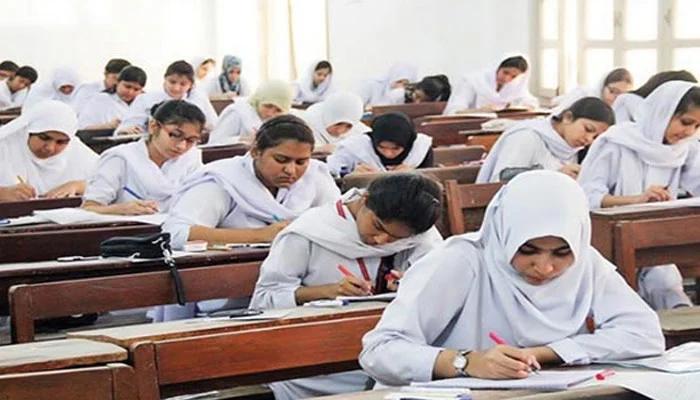The federal budget for the Budget year 2025–26, unveiled by Finance Minister Muhammad Aurangzeb, reflects a cautious balancing act. Pakistan continues to adhere to strict fiscal discipline under the International Monetary Fund’s (IMF) guidance while attempting to offer modest relief to specific sectors. Though tagged as an austerity budget, the proposals indicate a focused approach to economic revival, tax reform, and industrial rejuvenation.
This years budget comes at a time when the country is navigating deep economic challenges. From declining development spending to heavy debt obligations. The government’s room to maneuver has been constrained. Despite this, the budget includes selective relief measures for the salaried class and the real estate and construction sectors, demonstrating the government’s intent to stimulate growth even within tight financial constraints.
Budget Consolidation Takes Center Stage
With an ambitious target of Rs14.13 trillion in revenue, the federal government has aimed for an 18.7% increase from the revised Rs11.9 trillion for the current year. This figure includes an additional Rs840 billion in fresh revenue measures and Rs1.39 trillion in inflation indexed tax increases. Expenditure control has also been prioritized, aiming for a Rs2.26 trillion reduction. This cut, though significant, comes at the cost of public welfare and development spending.
Despite a record shortfall in tax revenue during the current Budget year, the finance minister remains optimistic. A notable achievement has been the containment of the Budget deficit to 5.6% of GDP down from the anticipated 5.9%. This has been made possible largely by increased taxation and provincial cooperation, which resulted in a cash surplus of Rs1.01 trillion. For 2025–26, the government aims to reduce the deficit even further, targeting 3.9% of GDP.
Limited Relief for the Salaried Class
After years of high inflation and mounting tax burdens, the salaried class received some positive news. The income tax on annual earnings between Rs600,000 and Rs1.2 million has been proposed to be halved from 5% to 2.5%. Although the finance bill lists this rate as low as 1%, causing some confusion. Salaries up to Rs2.2 million annually will be taxed at 11%. Reduced from the current 15%, and those earning between Rs2.2 million and Rs3.2 million will see a reduction from 25% to 23%.
For government employees, the budget includes a 10% salary hike and a 7% increase in pensions. The government has announced a higher 25% raise for armed forces personnel, citing their commendable performance. It has also introduced a 1% reduction in the surcharge on annual incomes above Rs10 million to help curb the ongoing brain drain of skilled professionals.
Real Estate and Construction Get a Boost
In an effort to revitalize the construction and housing sectors, which inflation and high borrowing costs have severely affected. The government has announced significant tax incentives. It has reduced the withholding tax on property purchases and proposed removing the 7% federal excise duty on the transfer of commercial properties. The government has also launched a new tax credit scheme for homes up to 10 marlas and flats up to 2,000 square feet.
Additionally, the government has slashed the stamp duty on property transactions in Islamabad from 4% to 1% and expects provincial governments to replicate this move. It has introduced these measures to reignite real estate investment, create jobs, and stimulate associated industries.
Expanded Tax Base and Digital Economy Regulation
The government has taken concrete steps to widen the tax net, focusing especially on the digital economy. The government will now monitor online businesses and digital marketplaces through courier companies. It has imposed a 1% advance tax on cash withdrawals for non-filers, up from the previous 0.6%, to encourage digital payments. It will also discourage businesses from conducting large cash transactions.
A 5% tax on pensions exceeding Rs10 million annually for pensioners under 70 years has been proposed. The tax on interest income has increased from 15% to 20%, although small savers and national savings schemes will remain unaffected. Strict actions, such as freezing bank accounts and restricting property transfers, are planned against non-filers and tax evaders.
Boost in Tax-to-GDP Ratio
One of the notable achievements highlighted by the finance minister is the improvement in the tax-to-GDP ratio. It has increased from 8.8% to 10.3% within the current Budget year and is expected to reach 10.4% by June 2025. Including non-tax revenues, the federal ratio stands at 11.6%, while the consolidated figure including provinces is at 12.3%. This growth is attributed to more efficient tax collection and better compliance strategies.
Balancing Revenue and Expenditure
To finance government operations, the government projects non-tax revenues to rise to Rs5.15 trillion from Rs4.9 trillion. It estimates the overall gross federal revenue for the next year at Rs19.28 trillion. After transferring Rs8.2 trillion to the provinces, the federal government retains Rs11.07 trillion in net revenue. It has reduced subsidy allocations by 14%, making major cuts in power sector subsidies for WAPDA, K-Electric, and Azad Jammu & Kashmir.
Interestingly, the government expects the petroleum levy on fuel products to generate Rs1.47 trillion, marking a 26% increase. It estimates profits from the State Bank of Pakistan at Rs2.4 trillion, which will contribute significantly to national revenue. On the expenditure side, it projects an 8% decrease in debt servicing costs, helping to ease fiscal pressure. Military and civil pensions will see modest increases.
The Role of Agriculture and IMF Agreements
In a positive development, the government managed to convince the IMF to exempt fertilisers and insecticides from new taxes. This exemption is meant to position agriculture as a key growth driver. With continued fiscal consolidation and support from international partners, this policy move could help boost rural incomes and food security.
A Note About Parhlo Pakistan
For readers seeking in-depth insights into Pakistan’s educational, economic, and policy developments, Parhlo Pakistan is your trusted source. Our platform offers updated and well-researched content on a wide range of topics, including budget analysis, exam resources, and student guidance. Whether you are a student, professional, or policy enthusiast. Parhlo Pakistan provides accessible and credible information to help you stay informed and empowered. Visit us for more articles, resources, and updates.
Conclusion
The 2025–26 budget is best described as one of compromise. While it lacks sweeping relief measures, it does introduce calculated incentives and realistic targets. Its primary focus remains fiscal consolidation, stabilizing the economy, and improving tax collection without overwhelming the most vulnerable segments. For Pakistan, this budget may not be a complete solution, but it signals a serious attempt at economic discipline and growth planning.
Whether these measures will translate into sustainable development remains to be seen. What is clear, however, is that the government has chosen to take a structured path toward fiscal reform, albeit one that offers only crumbs of relief to a population still grappling with the cost of living crisis.




